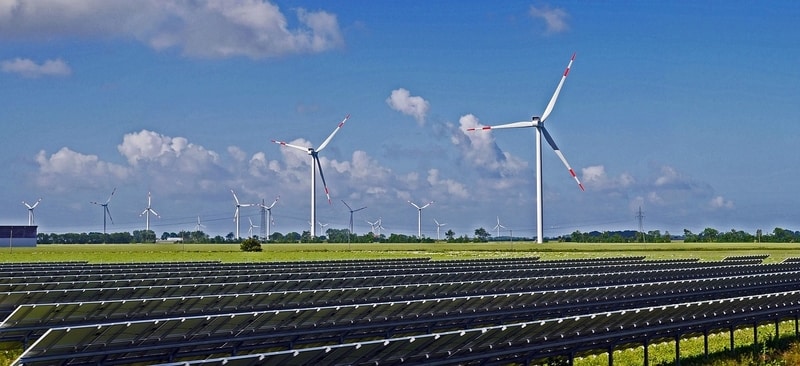Solar and onshore wind power are now the cheapest new sources of electricity in at least two-thirds of the world’s population, further threatening the two fossil-fuel stalwarts – coal and natural gas.
—
The Cheapest Source of Electricity
The levelized cost of electricity for onshore wind projects has fallen 9% to $44 a megawatt-hour since the second half of last year. Solar declined 4% to $50 a megawatt-hour, according to a report Tuesday by BloombergNEF.
The prices are even lower in countries including the U.S., China and Brazil. Equipment costs have come down, technologies have improved and governments across the world have boosted clean-power targets as they seek to combat climate change. That could squeeze out coal and natural gas when utilities develop new power plants.
“Best-in-class solar and wind projects will be pushing below $20 per megawatt-hour this side of 2030,” Tifenn Brandily, an analyst at BNEF, said in a statement. “There are plenty of innovations in the pipeline that will drive down costs further.
You might also like: India Plans to Build 40 New Coalfields on Ancient Forest Land
Yet it remains unclear whether the coronavirus’ impact on coal and gas prices will erode the competitiveness of wind and solar. “If sustained, this could help shield fossil fuel generation for a while from the cost onslaught from renewables,” Seb Henbest, chief economist at BNEF, said in the statement.
A decade ago, solar was more than $300 a megawatt-hour and onshore wind exceeded $100 per megawatt-hour. Today, onshore wind is $37 in the U.S. and $30 in Brazil, while solar is $38 in China, the cheapest sources of new electricity in those countries.
Battery storage is also getting more competitive. The levelized cost of electricity for batteries has fallen to $150 a megawatt-hour, about half of what it was two years ago. That’s made it the cheapest new peaking-power technology in places that import gas, including Europe, China and Japan.
BNEF’s levelized cost for electricity measures the entire cost of producing power, accounting for development, construction and equipment, financing, feedstock, operation and maintenance.
This story originally appeared in Bloomberg Green, written by Brian Eckhouse, and is republished here as a part of Earth.Org’s partnership with Covering Climate Now, a global collaboration of more than 250 news outlets to strengthen coverage of the climate story.

















